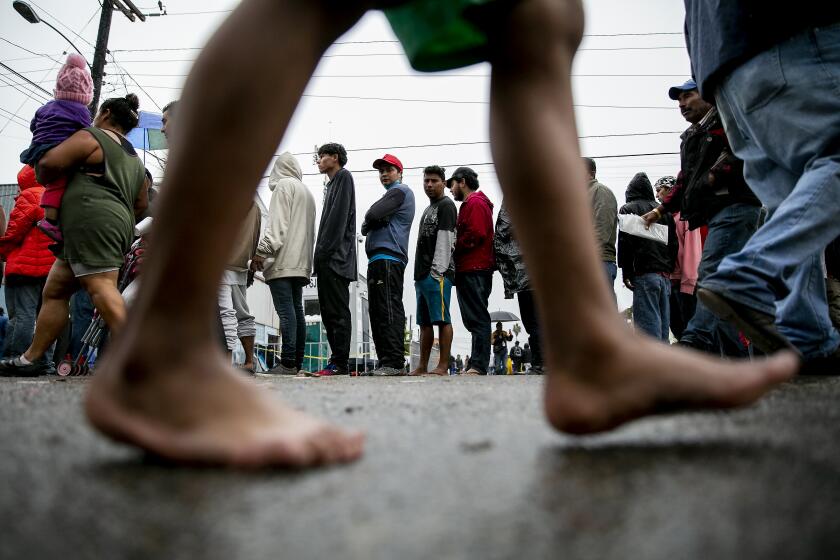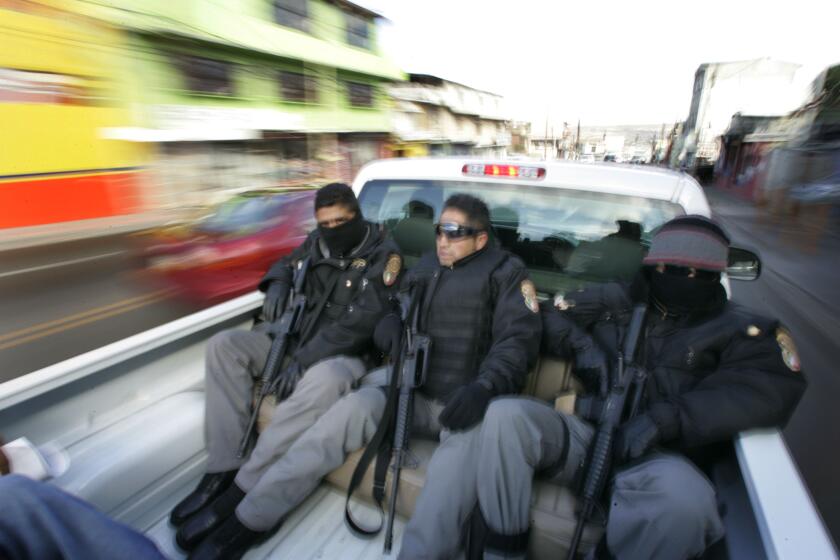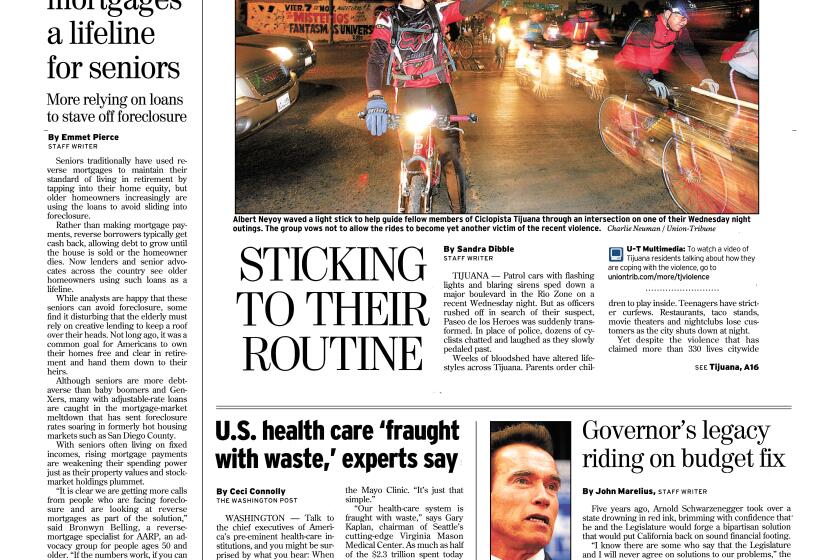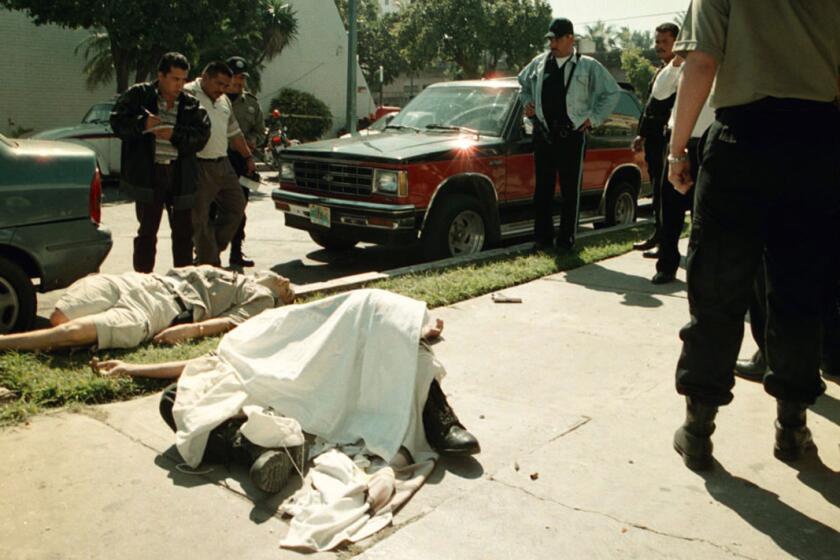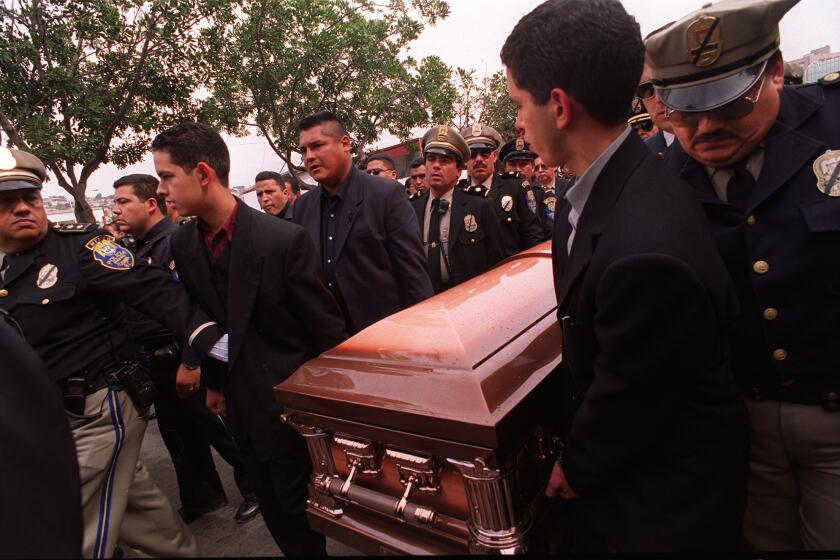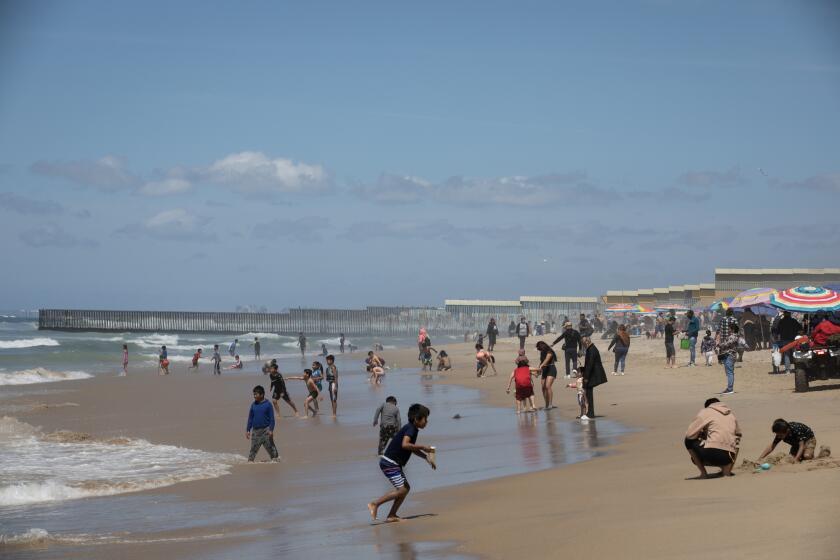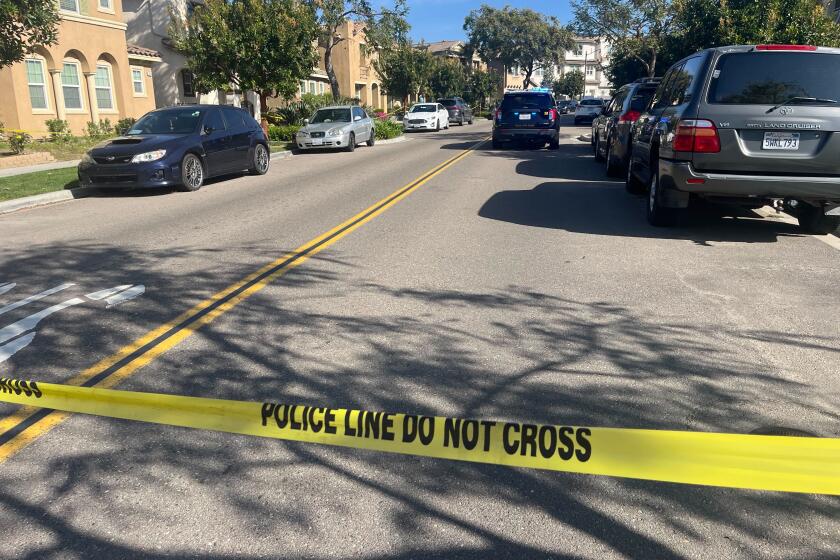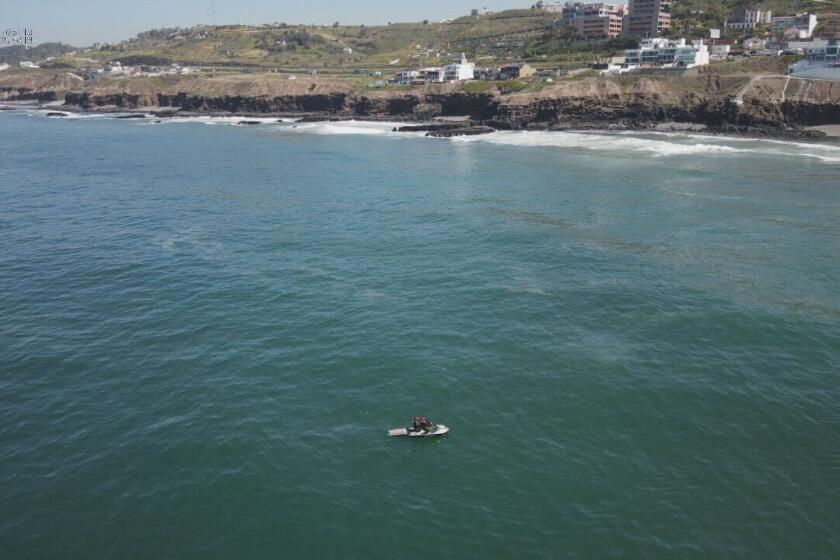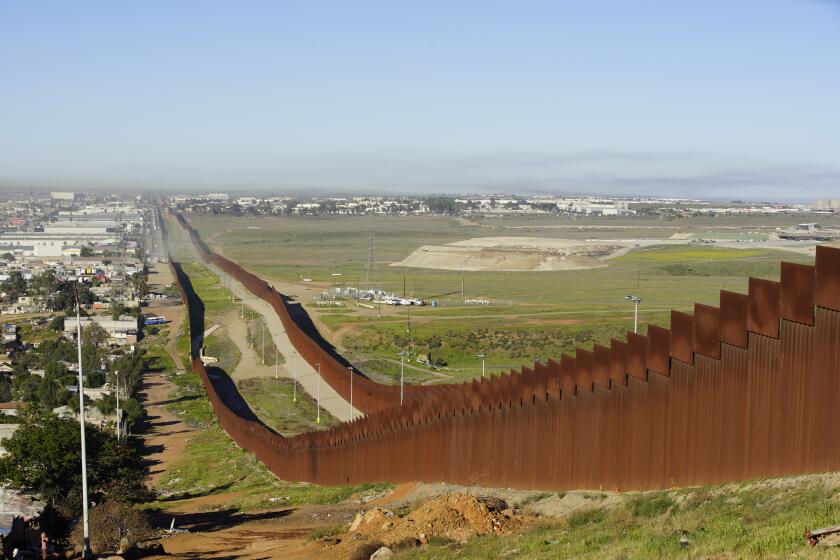San Ysidro gets a new pedestrian entrance
Within minutes of its opening at noon on Friday, a new pedestrian entrance from Tijuana into San Ysidro was flooded with border-crossers — students on vacation, workers, shoppers, U.S. retirees, bicyclists — lining up at eight open lanes manned by U.S. Customs and Border Protection officers.
Known as PedWest, the facility west of the vehicle lanes at the massive San Ysidro Port of Entry adds a critical piece of infrastructure to the busy port as it undergoes a transformation. Some 20,000 people enter the United States on foot on any given day through San Ysidro, the busiest port of entry in the Western Hemisphere.
“I’d give it a nine,” said Alejandro Estrada, a 57-year-old Tijuana resident and one of the first to use the new building as he prepared to shop in San Ysidro. Reaching the facility through a temporary structure in Tijuana, however, was not so pleasant, he said: “It was disorganized. People got impatient.”
Pedestrian border-crossers like Estrada are an economic lifeline for this small community across from Tijuana, and PedWest is a part of overall plan to upgrade and modernize the federal facility. “This is a long-awaited addition to our binational region,” said Jason Wells, executive director of the San Ysidro Chamber of Commerce, which championed the opening of PedWest.
While the changes at San Ysidro up to now have affected the port’s vehicle crossers, PedWest marks the first pedestrian improvements. With 14 lanes, two of them reversible, it currently is only serving northbound traffic. Mexico does not plan to open access to southbound traffic at the port’s western end for at least another two years, said Rodulfo Figueroa, head of Mexico’s National Migration Institute in Tijuana.
The ceremony launching PedWest, attended by San Diego Mayor Kevin Faulconer and Tijuana Mayor Jorge Astiazarán, was characterized as more than a local event. PedWest is “proof of the commitment of both countries to offer our people, our communities, a border that is modern and secure,” said Paulo Carreño King, subsecretary for North American Affairs in Mexico’s Foreign Ministry, who came accompanied by Mexico’s ambassador to the United States, Carlos Sada.
Roberta Jacobson, the U.S. ambassador to Mexico called PedWest’s opening “another step in the integration of this thriving CaliBaja region.”
The opening of the new facility marks a step forward in the rebuilding of the San Ysidro Port of Entry, a multiphase $741 million project overseen by the U.S. General Services Administration that is scheduled for completion in 2019.
“The pedestrian area is unique in that it’s been so under-invested in for so long,” said Erik Lee, executive director of the North American Research Partnership, a non-profit think tank.
The opening of the new building makes way for the demolition of the existing 14-lane pedestrian entrance that is located east of San Ysidro’s vehicle lanes. That facility is being replaced with an expanded pedestrian entrance set for completion in 2019. In the meantime, crossers will be able to continue entering the United States on the eastern side through a provisional facility with six lanes.
Mexico’s funding issues
Earlier this year, uncertainty arose over the PedWest’s opening after Mexican officials told their U.S. counterparts that they lacked the funds to complete the infrastructure to meet the U.S. deadline for launching the project. The funding finally came through, but not in time for PedWest’s projected opening date.
As a short-term solution, Mexico agreed to build a temporary access to PedWest, a ramp fashioned from sheets of stainless steel, tubes and wood. But now that structure has come under growing criticism in Tijuana.
On Friday, the president of the Tijuana Economic Development Council, Gabriel Camarena Salinas, issued a statement saying the structure “could represent a risk for the citizens of both countries” and urged state and municipal authorities to verify its stability.
A Mexico City-based official with INDAABIN, the Mexican agency in charge of building federal facilities, defended the provisional project to reporters following the opening ceremony. “In no way is it unsafe,” said Carlos de la Fuente, general director of construction and appraisals for INDAABIN.
He said that the timing question, “is not a question of a lack of coordination,” but rather “very complex topic. ... The fact is that there were multiple agencies participating on both sides, and everybody had to come to an agreement.”
The opening of PedWest, which expands the number of lanes available to process pedestrians from 14 to 20, has raised hopes that their long wait times at peak crossing periods will go down. But U.S. Customs and Border Protection officials have said they expect to maintain the current level of service.
Sidney Aki, the port director for San Ysidro, said that over the next few days, the plan is to monitor the flow of pedestrians through the San Ysidro and nearby Otay Mesa ports of entry, “then determine resource allocation.”

Cruzar la frontera usando PedWest
sandra.dibble@sduniontribune.com
Get Essential San Diego, weekday mornings
Get top headlines from the Union-Tribune in your inbox weekday mornings, including top news, local, sports, business, entertainment and opinion.
You may occasionally receive promotional content from the San Diego Union-Tribune.

